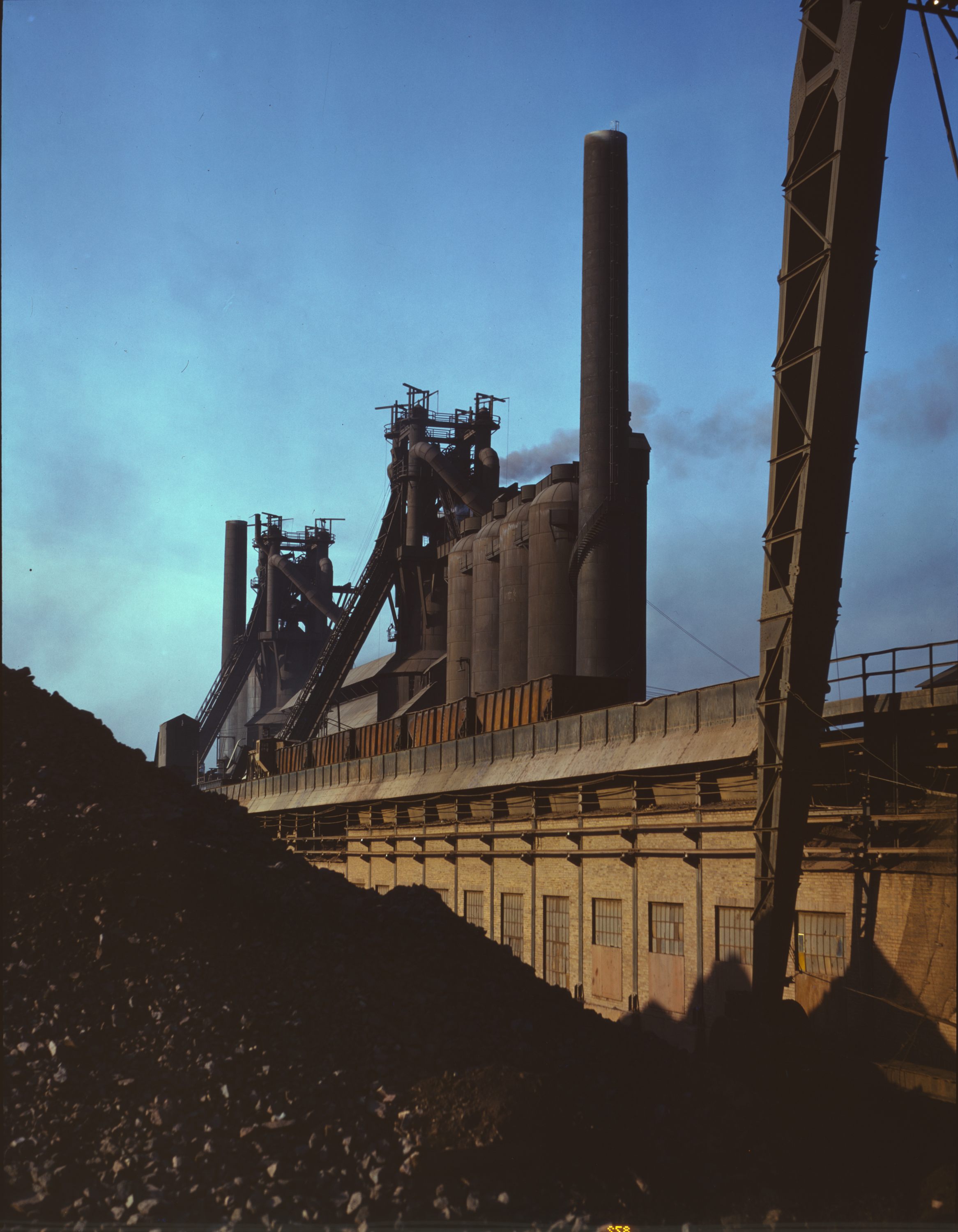|
Former Pittsburgh Wash House And Public Baths Building
The Former Pittsburgh Wash House and Public Baths Building is located at 3495 Butler Street in the Lawrenceville neighborhood of Pittsburgh, Pennsylvania. Built in 1904 in the Romanesque Revival architectural style, the building today serves as office space. In 2019, it was listed as a contributing property in the Lawrenceville Historic District. History The original idea for the bath house came from the Clothing and House Furnishing Bureau. The group was organized by parishioners from local churches, including St. James Episcopal Church, in 1895. The organization spent the first years of its life providing working-class families with clothing at fair prices. They soon realized that since several families often lived in single-family homes, that this meant that regular and proper bathing was hard to come by. This encouraged the group to purchase land for a bath house in 1901, and construction began in April 1903. Two prominent philanthropists, Henry W. Phipps Jr. and George W ... [...More Info...] [...Related Items...] OR: [Wikipedia] [Google] [Baidu] |
Lawrenceville Historic District (Pittsburgh, Pennsylvania)
The Lawrenceville Historic District is a U.S. historic district in Pittsburgh, Pennsylvania, which encompasses the majority of the Lawrenceville neighborhood. The historic district includes 3,217 contributing resources, many of which are rowhouses, commercial buildings, and former industrial properties built between the 1830s and early 20th century. The district was listed on the National Register of Historic Places in 2019. Notable contributing properties *Allegheny Arsenal *Allegheny Cemetery† * Arsenal Middle School† * Bayard School† * Boys' Club of Pittsburgh† * Butler Street Gatehouse† * Carnegie Library * Carol Peterson House * Consolidated Ice Company Factory No. 2† *''Doughboy'' * Ewalt House * Foster School† * Holy Family Church *Iron City Brewing Company * Lawrence Public School† *McCleary Elementary School† * Mowry-Addison Mansion * Naser's Tavern * Pennsylvania National Bank Building * Pittsburgh Wash House and Public Baths Building * St. August ... [...More Info...] [...Related Items...] OR: [Wikipedia] [Google] [Baidu] |
George Westinghouse
George Westinghouse Jr. (October 6, 1846 – March 12, 1914) was an American entrepreneur and engineer based in Pennsylvania who created the railway air brake and was a pioneer of the electrical industry, receiving his first patent at the age of 19. Westinghouse saw the potential of using alternating current for electric power distribution in the early 1880s and put all his resources into developing and marketing it. This put Westinghouse's business in direct competition with Thomas Edison, who marketed direct current for electric power distribution. In 1911 Westinghouse received the American Institute of Electrical Engineers's (AIEE) Edison Medal "For meritorious achievement in connection with the development of the alternating current system." Early years George Westinghouse was born in 1846 in Central Bridge, New York (see George Westinghouse Jr. Birthplace and Boyhood Home), the son of Emeline (Vedder) and George Westinghouse Sr., a machine shop owner. His ancestors ... [...More Info...] [...Related Items...] OR: [Wikipedia] [Google] [Baidu] |
Buildings And Structures In Pittsburgh
A building, or edifice, is an enclosed structure with a roof and walls standing more or less permanently in one place, such as a house or factory (although there's also portable buildings). Buildings come in a variety of sizes, shapes, and functions, and have been adapted throughout history for a wide number of factors, from building materials available, to weather conditions, land prices, ground conditions, specific uses, prestige, and aesthetic reasons. To better understand the term ''building'' compare the list of nonbuilding structures. Buildings serve several societal needs – primarily as shelter from weather, security, living space, privacy, to store belongings, and to comfortably live and work. A building as a shelter represents a physical division of the human habitat (a place of comfort and safety) and the ''outside'' (a place that at times may be harsh and harmful). Ever since the first cave paintings, buildings have also become objects or canvasses of much artistic ... [...More Info...] [...Related Items...] OR: [Wikipedia] [Google] [Baidu] |
Pittsburgh City Council
The Pittsburgh City Council serves as the legislative body in the City of Pittsburgh. It consists of nine members. City council members are chosen by plurality elections in each of nine districts. The city operates under a mayor-council system of local governance. Current membership The current members of the city council are: † Denotes Council President (since 2020) ‡ Denotes Council President pro tempore (since 2020) Past presidents * Bruce Kraus 2014–2020 *Darlene Harris 2010–2014 *Doug Shields 2006–2010 *Luke Ravenstahl 2005–2006 *Gene Ricciardi 2002–2005 * Bob O'Connor 1998–2002 *Jim Ferlo 1994–1998 * Jack Wagner 1990–1994 *Ben Woods 1988–1990 *Sophie Masloff 1988 *Ben Woods 1985–1988 *Robert Rade Stone 1985 *Eugene "Jeep" DePasquale 1978–1984 * Richard Caliguiri 1977–1978 *Louis Mason 1970–1977 *John F. Counahan 1968–1970 *Thomas Gallagher 1936–1959 *Robert Garland * James F. Malone * James Ross 1817 Past members * Corey O'Conno ... [...More Info...] [...Related Items...] OR: [Wikipedia] [Google] [Baidu] |
World War I
World War I (28 July 1914 11 November 1918), often abbreviated as WWI, was one of the deadliest global conflicts in history. Belligerents included much of Europe, the Russian Empire, the United States, and the Ottoman Empire, with fighting occurring throughout Europe, the Middle East, Africa, the Pacific, and parts of Asia. An estimated 9 million soldiers were killed in combat, plus another 23 million wounded, while 5 million civilians died as a result of military action, hunger, and disease. Millions more died in genocides within the Ottoman Empire and in the 1918 influenza pandemic, which was exacerbated by the movement of combatants during the war. Prior to 1914, the European great powers were divided between the Triple Entente (comprising France, Russia, and Britain) and the Triple Alliance (containing Germany, Austria-Hungary, and Italy). Tensions in the Balkans came to a head on 28 June 1914, following the assassination of Archduke Franz Ferdi ... [...More Info...] [...Related Items...] OR: [Wikipedia] [Google] [Baidu] |
Kindergarten
Kindergarten is a preschool educational approach based on playing, singing, practical activities such as drawing, and social interaction as part of the transition from home to school. Such institutions were originally made in the late 18th century in Germany, Bavaria and Alsace to serve children whose parents both worked outside home. The term was coined by German pedagogue Friedrich Fröbel, whose approach globally influenced early-years education. Today, the term is used in many countries to describe a variety of educational institutions and learning spaces for children ranging from 2 to 6 years of age, based on a variety of teaching methods. History Early years and development In 1779, Johann Friedrich Oberlin and Louise Scheppler founded in Strasbourg an early establishment for caring for and educating preschool children whose parents were absent during the day. At about the same time, in 1780, similar infant establishments were created in Bavaria. In 1802, Princ ... [...More Info...] [...Related Items...] OR: [Wikipedia] [Google] [Baidu] |
Carnegie Steel Company
Carnegie Steel Company was a steel-producing company primarily created by Andrew Carnegie and several close associates to manage businesses at steel mills in the Pittsburgh, Pennsylvania area in the late 19th century. The company was formed in 1892 and was subsequently sold in 1901 in one of the largest business transactions of the early 20th century, to become the major component of U.S. Steel. The sale made Carnegie one of the richest men in history. Creation Carnegie began the construction of his first steel mill, the Edgar Thomson Steel Works, in 1872 at Braddock, Pennsylvania. The Thomson Steel Works began producing rails in 1874. By a combination of low wages, efficient technology infrastructure investment and an efficient organization, the mill produced cheap steel, which sold for a large profit in the growing markets of industrial development. Carnegie alone estimated that 40% was returned on the investment, i.e., a profit of $40,000 from a $100,000 investment in ... [...More Info...] [...Related Items...] OR: [Wikipedia] [Google] [Baidu] |
Andrew Carnegie
Andrew Carnegie (, ; November 25, 1835August 11, 1919) was a Scottish-American industrialist and philanthropist. Carnegie led the expansion of the American steel industry in the late 19th century and became one of the richest Americans in history. He became a leading philanthropist in the United States, Great Britain, and the British Empire. During the last 18 years of his life, he gave away around $350 million (roughly $ billion in ), almost 90 percent of his fortune, to charities, foundations and universities. His 1889 article proclaiming " The Gospel of Wealth" called on the rich to use their wealth to improve society, expressed support for progressive taxation and an estate tax, and stimulated a wave of philanthropy. Carnegie was born in Dunfermline, Scotland, and emigrated to Pittsburgh with his parents in 1848 at age 12. Carnegie started work as a telegrapher, and by the 1860s had investments in railroads, railroad sleeping cars, bridges, and oil derricks. H ... [...More Info...] [...Related Items...] OR: [Wikipedia] [Google] [Baidu] |
Allegheny, Pennsylvania
Allegheny City was a municipality that existed in the U.S. state of Pennsylvania from 1788 until it was annexed by Pittsburgh in 1907. It was located north across the Allegheny River from downtown Pittsburgh, with its southwest border formed by the Ohio River, and is known today as the North Side. The city's waterfront district, along the Allegheny and Ohio rivers, became Pittsburgh's North Shore neighborhood. The area of Allegheny City included the present Pittsburgh neighborhoods of Allegheny Center, Allegheny West, Brighton Heights, California-Kirkbride, Central Northside, Chateau, East Allegheny, Fineview, Manchester, Marshall-Shadeland, North Shore, Northview Heights, Perry North, Perry South, Spring Garden, Spring Hill–City View, Summer Hill, and Troy Hill. History The City of Allegheny was laid out in 1788 according to a plan by John Redick. The lots were sold in Philadelphia by the State government or given as payment to Revolutionary War vet ... [...More Info...] [...Related Items...] OR: [Wikipedia] [Google] [Baidu] |
Henry Phipps Jr
Henry Phipps Jr. (September 27, 1839 – September 22, 1930) was an American entrepreneur known for his business relationship with Andrew Carnegie and involvement with the Carnegie Steel Company. He was also a successful real estate investor. After selling his stock in Carnegie Steel, he devoted a great deal of his time and money to philanthropic works. Early life Henry Phipps Jr. was born on September 27, 1839 in Philadelphia, Pennsylvania. His English parents, Henry Phipps, a shoemaker, and Hannah (née Franks), were married at Wolverhampton in 1824 and migrated to Philadelphia at some point after that, settling in Pittsburgh in 1845. Phipps was educated at public schools in Allegheny City, Pennsylvania. He had one sister, Amelia Phipps Walker (Mrs. John Walker; 1846-1887), and two brothers: William Henry Phipps (1825-1902), and John Phipps (1833-1860), who was also friends with Carnegie and who died young. Phipps’s oldest brother, William Henry Phipps, was born on 27 Ma ... [...More Info...] [...Related Items...] OR: [Wikipedia] [Google] [Baidu] |
Butler Street
Butler Street is a street in Pittsburgh, Pennsylvania which is the main commercial thoroughfare of the Lawrenceville neighborhood. Since the early 2000s, it has become a center for arts, dining, and music, with many local businesses including bars, restaurants, breweries, and specialty shops. It is named for the city of Butler, Pennsylvania, whose namesake was Maj. Gen. Richard Butler of the Continental Army. Route Butler Street begins at Doughboy Square in Lower Lawrenceville, where it splits off from Penn Avenue. From here it runs parallel to the Allegheny River through Central and Upper Lawrenceville and then Morningside before terminating at the Highland Park Bridge. The roadway continues to the east as Washington Boulevard and then Pennsylvania Route 130 (Allegheny River Boulevard). The section of Butler between the 62nd Street Bridge and Highland Park Bridge is part of Pennsylvania Route 8. The street also has an important intersection at 40th Street, providing acces ... [...More Info...] [...Related Items...] OR: [Wikipedia] [Google] [Baidu] |
Contributing Property
In the law regulating historic districts in the United States, a contributing property or contributing resource is any building, object, or structure which adds to the historical integrity or architectural qualities that make the historic district significant. Government agencies, at the state, national, and local level in the United States, have differing definitions of what constitutes a contributing property but there are common characteristics. Local laws often regulate the changes that can be made to contributing structures within designated historic districts. The first local ordinances dealing with the alteration of buildings within historic districts was passed in Charleston, South Carolina in 1931. Properties within a historic district fall into one of two types of property: contributing and non-contributing. A contributing property, such as a 19th-century mansion, helps make a historic district historic, while a non-contributing property, such as a modern medical clinic, ... [...More Info...] [...Related Items...] OR: [Wikipedia] [Google] [Baidu] |



.jpg)


